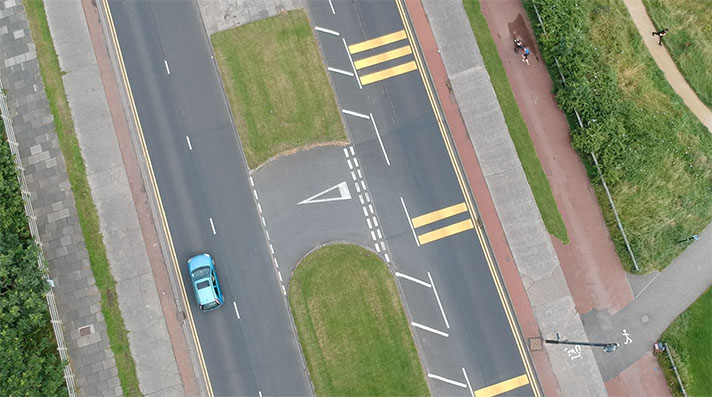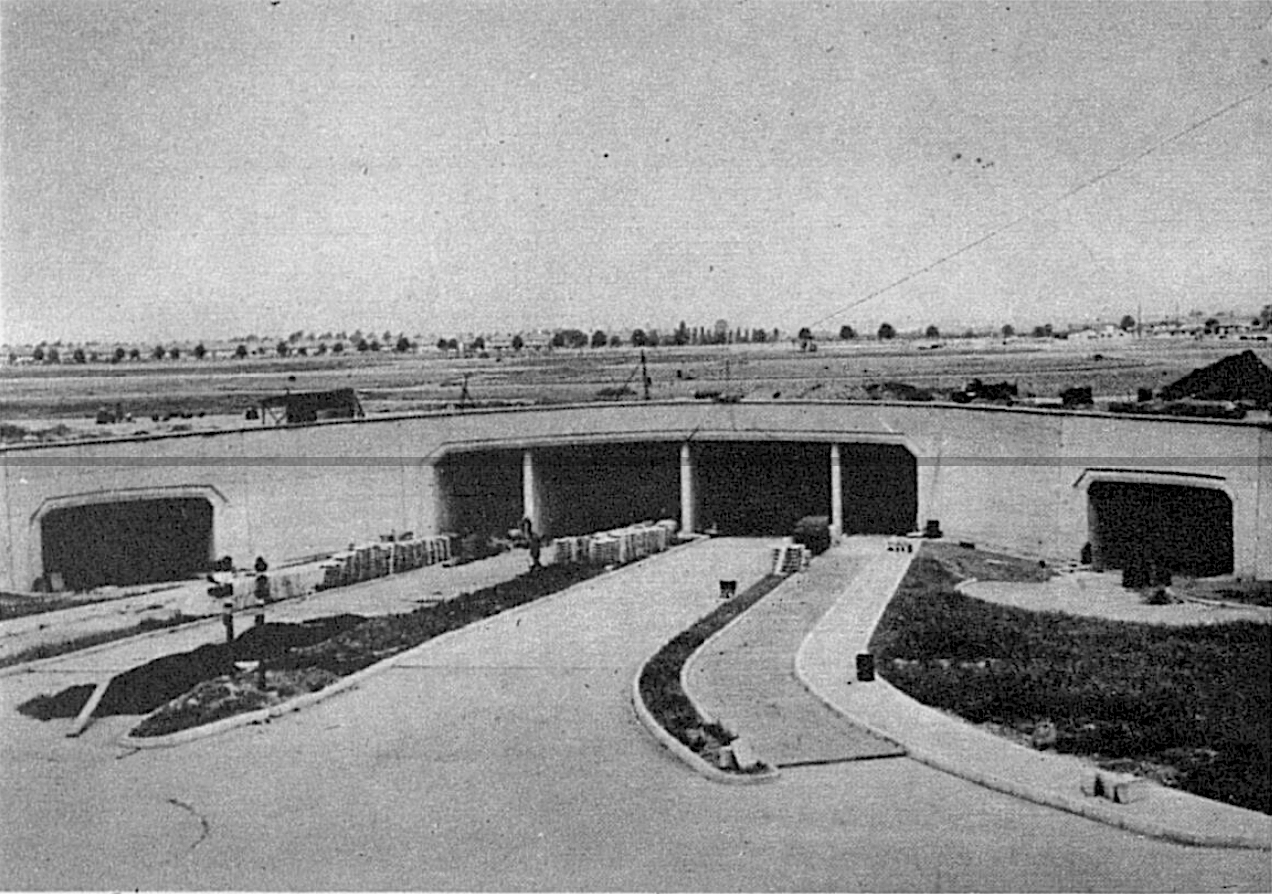
Construction of the Heathrow cycle tracks and footways and the entrance to road/cycle/pedestrian tunnel. From The Sphere, 1951.
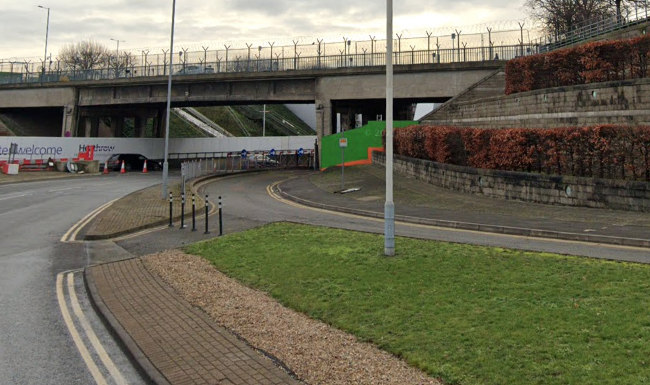
Heathrow’s tunnel road today as seen from the Google Streetview car, which goes no further than this.
A mid-1950s expansion of Heathrow Airport — then known as London Airport — included a short section of 1930s-style both-sides-of-the-road cycle track and a 630-metre, double-sided “cycle & pedestrian subway” separated with barriers from the carriageways for motor vehicles.
The subway still exists, but the 1930s-style cycle tracks have largely disappeared under later road remodellings.
The cycle tracks and footways beneath Heathrow Airport were in use until recently, with the Ealing Cycling advocacy group suggesting in 2019 that they should be reopened.
“The new traffic tunnel at London Airport … continues to expand,” reported The Sphere in August 1951.
“The tunnels, two-fifths of a mile long, will handle pedestrian and vehicular traffic from the new terminal buildings, which will rise in the centre of the triangular run ways, and will lead to a low-level roundabout at the foot of a ramp road up to the public highway,” continued the magazine, adding that the “subways will consist of four tubes, two for double lines of traffic in each direction and two containing a cycle track and a pedestrian way.”
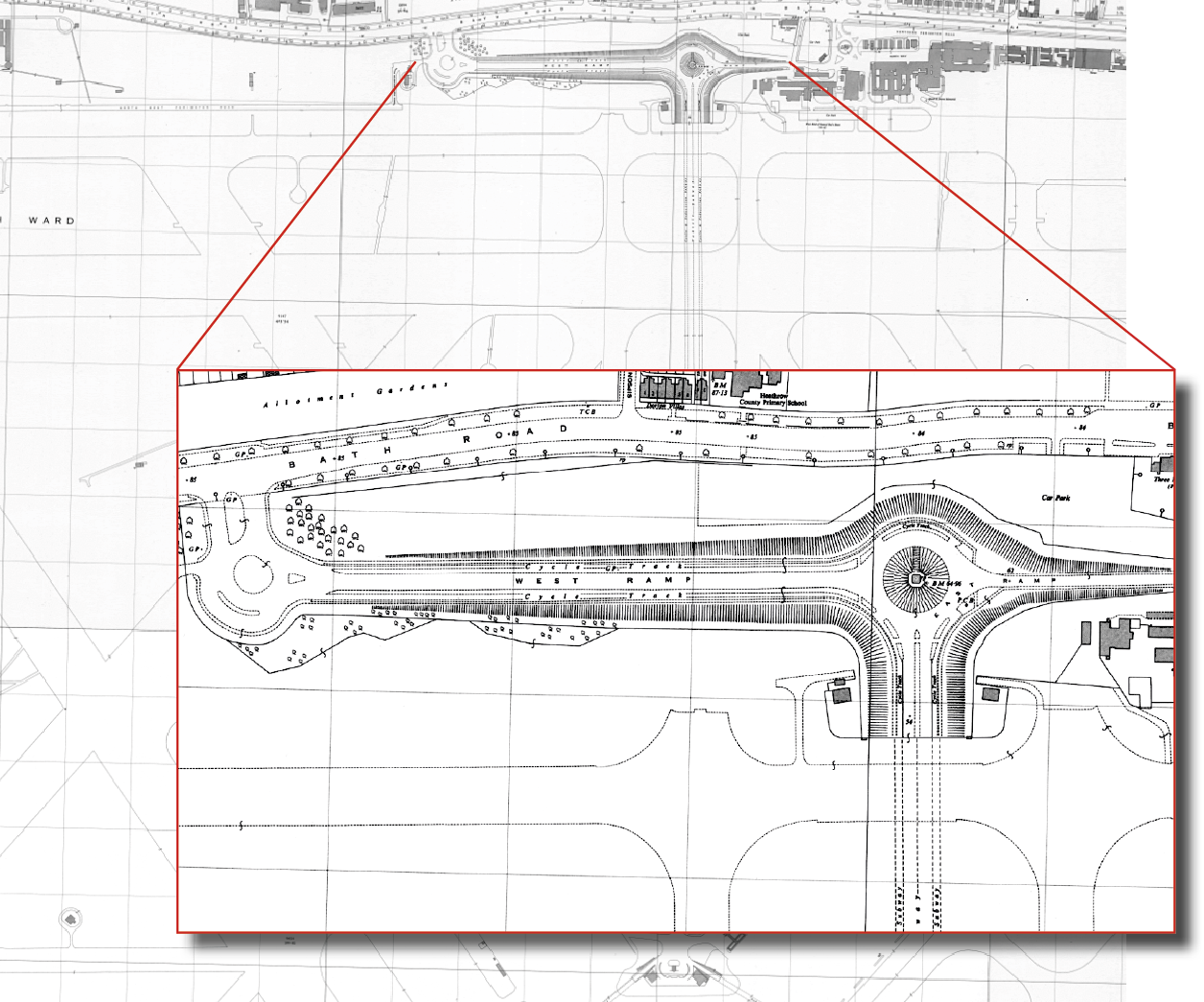
Large-scale OS mapping of Heathrow, 1963.
The tunnels and the cycle tracks were operational by October 1953, reported The Sphere.
The tunnel is no longer in use by cyclists and pedestrians.
“Consideration is being given to reopening the side bores of the Northern Access Tunnel to cyclists once the current refurbishment work is complete,” promised a 2019 airport expansion consultation document.
But, confusingly, the document went on to say that cycle access would later be removed and the tunnels used instead for a motor-vehicle shuttle service between the northern car park and the terminals.
“All these cycle tunnels are essential,” argued Ealing Cycling in 2019. “Without them, over half of Heathrow’s employees will be unable to cycle to work.”
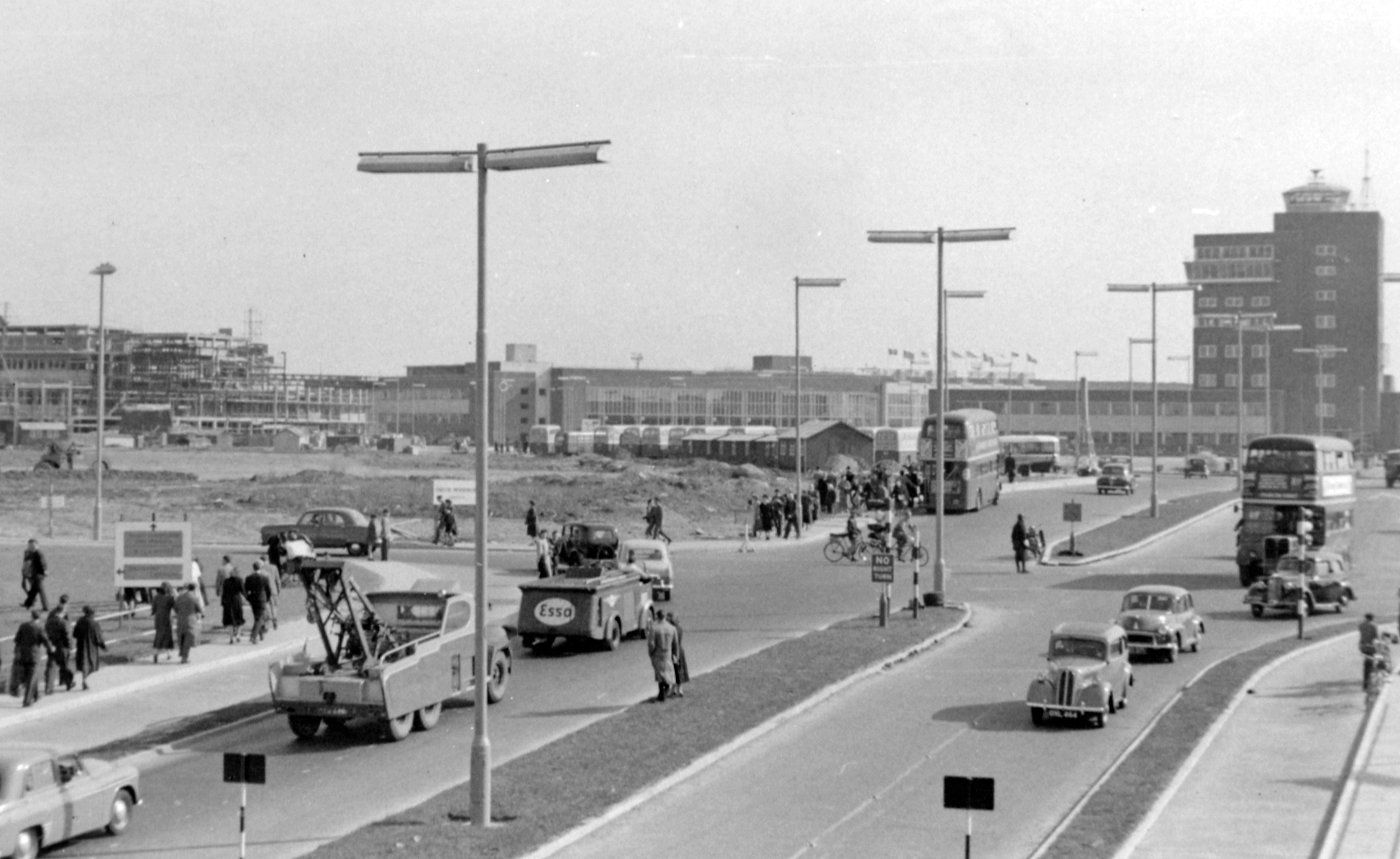
Wide cycle track at Heathrow airport, 1955. View is SW from the tunnel road off Bath Road. Copyright Ben Brooksbank and licensed for reuse under Creative Commons Licence Attribution-ShareAlike 2.0 Generic (CC BY-SA 2.0).
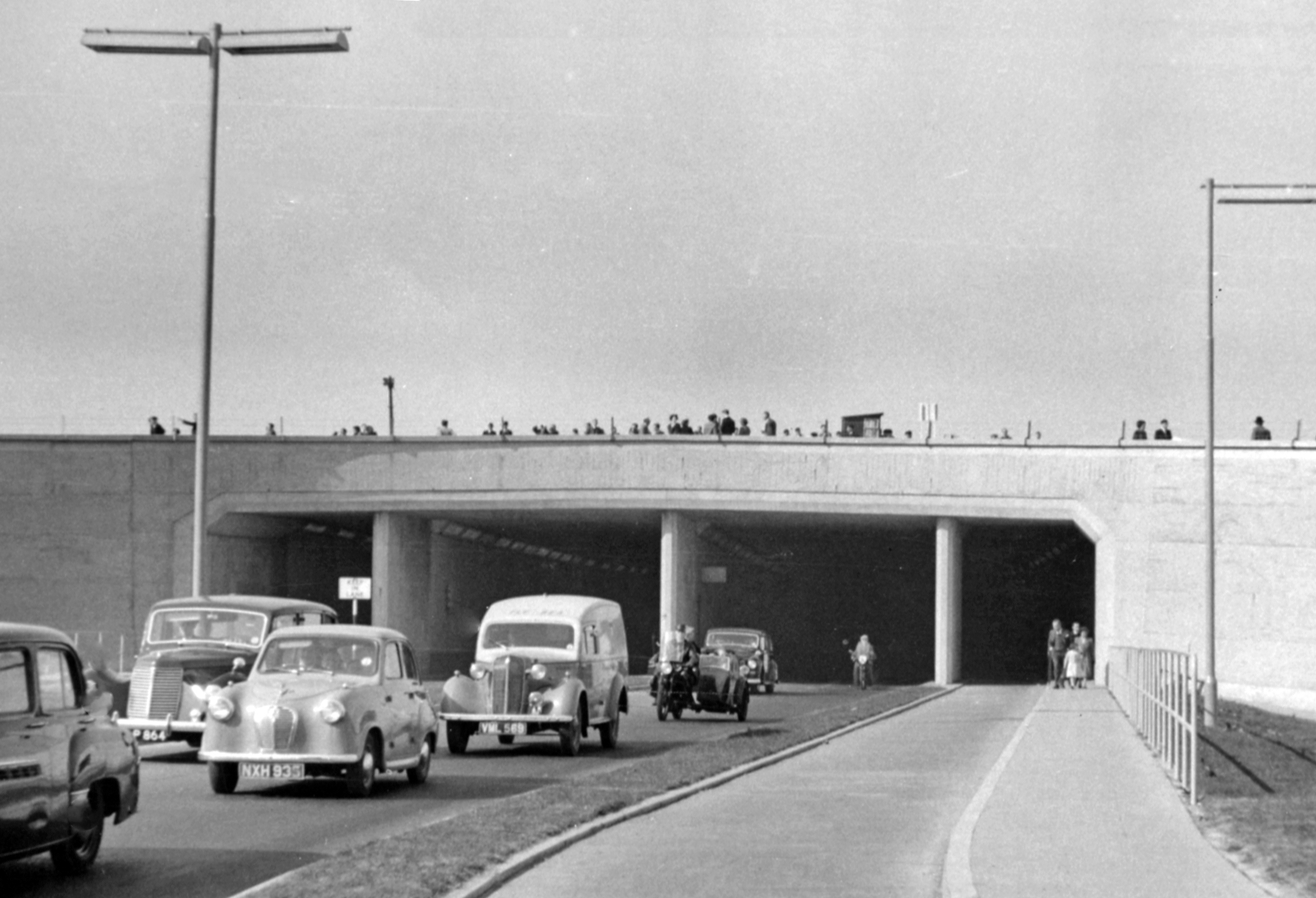
Cycle track and footway at Heathrow airport tunnel entrance, 1955. Copyright Ben Brooksbank and licensed for reuse under Creative Commons Licence Attribution ShareAlike 2.0 Generic (CC BY-SA 2.0).


